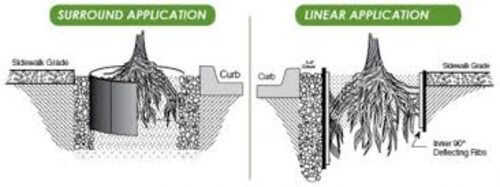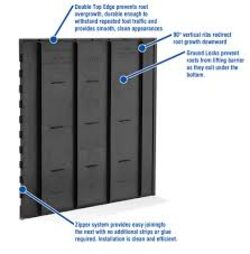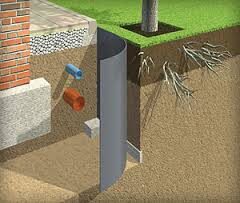- Foundation Repair
- Services
-
Service Areas
- Foundation Repairs in Collin County
-
Foundation Repair Dallas County
- Foundation Repair Balch Springs Texas
- Carrollton Foundation Repair Company
- Foundation Repair in Dallas
- Foundation Repair in Duncanville Texas
- Foundation Repair Farmers Branch Texas
- Foundation Repair Garland
- Foundation Repair Grand Prairie Texas
- Foundation Repair Irving Texas
- Foundation Repair Mesquite Texas
- Foundation Repair Richardson Texas
- Foundation Repair Rowlett Tx
- Foundation Repair Seagoville Texas
-
Foundation Repair Dallas Historic District
- Foundation Repair University Park Texas
- Pier & Beam Repair Dallas Historic District
- Foundation Repair Highland Park
- Pier & Beam Repair in Junius Heights
- Foundation Repair Lakewood
- Foundation Repair in the M streets and lower greenville
- Pier & Beam Repair in Munger Place
- Foundation Repair Swiss Avenue Historic District
-
Foundation Repair Denton County
- Foundation Repair Aubrey Texas
- Foundation Repair Coppell Texas
- Foundation Repair City of Denton
- Foundation Repair The Colony Texas
- Foundation Repair Corinth Texas
- Foundation Repair Flower Mound Texas
- Foundation Repair Lake Dallas Texas
- Foundation Repair Little Elm Texas
- Foundation Repair Lewisville Texas
- Foundation Repair Grayson County
-
Foundation Repair Tarrant County
- Foundation Repair Arlington TX
- Foundation Repair Bedford Texas
- Foundation Repair Colleyville Texas
- Foundation Repair Euless Texas
- Foundation Repair Fort Worth
- Foundation Repair Grapevine Texas
- Foundation Repair Hurst Texas
- Foundation Repair Mansfield Texas
- Foundation Repair North Richland Hills Texas
- Foundation Repair Southlake Texas
- Recent Projects
- Customer Reviews
- Faq's
- About
ROOT BARRIERS PROTECT FOUNDATIONS
Tree Root Barriers are used to redirect roots
away from Foundations and Concrete Flatwork.
 Tree root barriers are most effective when they are installed at the right time and in the right place. Incorrectly installed root barriers can prevent your tree or shrubs from developing a healthy root system. They can also provide your plants or shrubs insufficient protection against aggressive roots. Properly preparing the soil around your tree when it is planted can increase the effectiveness of your root barrier and ensure that the tree develops a healthy root system away from foundations and buried utilities. If you acquired a property with mature trees we can still install root barriers to prevent damage to your homes foundation or any concrete flatwork or underground sewer or utility lines.
Tree root barriers are most effective when they are installed at the right time and in the right place. Incorrectly installed root barriers can prevent your tree or shrubs from developing a healthy root system. They can also provide your plants or shrubs insufficient protection against aggressive roots. Properly preparing the soil around your tree when it is planted can increase the effectiveness of your root barrier and ensure that the tree develops a healthy root system away from foundations and buried utilities. If you acquired a property with mature trees we can still install root barriers to prevent damage to your homes foundation or any concrete flatwork or underground sewer or utility lines.
Types of Barriers
Root barriers come in a variety of materials and styles with distinct advantages and drawbacks.  Solid barriers are panels made of corrosion-resistant metal, fiberglass or plastic that create an impenetrable wall that roots can not get through. These barriers are highly effective but can prevent water in the soil from draining properly and roots can grow around them if they are not large enough. Permeable barriers use a mesh screen that is designed to allow water and small roots to pass through. This type of barrier is effective at preventing damage to structures from large roots. The most effective type of root barrier uses a solid or permeable barrier combined with a long-lasting chemical designed to inhibit the growth of roots.
Solid barriers are panels made of corrosion-resistant metal, fiberglass or plastic that create an impenetrable wall that roots can not get through. These barriers are highly effective but can prevent water in the soil from draining properly and roots can grow around them if they are not large enough. Permeable barriers use a mesh screen that is designed to allow water and small roots to pass through. This type of barrier is effective at preventing damage to structures from large roots. The most effective type of root barrier uses a solid or permeable barrier combined with a long-lasting chemical designed to inhibit the growth of roots.
Barrier Installation
How your root barrier is installed has a strong impact on its ability to redirect the roots.  The best method for protecting a buried structure is to install a continuous root barrier that is the same length as the diameter of the tree at maturity, plus 2 feet along the length of the structure on the side closest to the tree. Root barriers need to reach a depth of at least 2 feet to significantly reduce the presence of large, damaging roots. The best time to install your barrier is at planting time, to avoid damaging the tree's root system.
The best method for protecting a buried structure is to install a continuous root barrier that is the same length as the diameter of the tree at maturity, plus 2 feet along the length of the structure on the side closest to the tree. Root barriers need to reach a depth of at least 2 feet to significantly reduce the presence of large, damaging roots. The best time to install your barrier is at planting time, to avoid damaging the tree's root system.
Soil Preparation
Loosening the soil around your trees at planting time can increase the effectiveness of a root barrier. Loosening the soil helps your tree produce a stronger root system and allows you to influence the direction they grow in. Tilling the soil around the root ball on the side of the tree facing away from the area you want to protect encourages the tree to form the bulk of its root system away from the structures.  Loosening the soil in an area three times the diameter of your new tree's root ball to a depth of 2 feet ensures that the strongest root growth will occur in that direction. Adding compost, or another soil amendment rich in organic matter, can further stimulate root growth away from structures.
Loosening the soil in an area three times the diameter of your new tree's root ball to a depth of 2 feet ensures that the strongest root growth will occur in that direction. Adding compost, or another soil amendment rich in organic matter, can further stimulate root growth away from structures.
Considerations
Tree roots can go around root barriers that don't span a broad enough area. In most cases, the root system of your tree will extend beyond the diameter of its branches. Your tree root barrier should extend above the surface of the soil and any mulch on the ground to ensure that tree roots cannot grow over it. Increasing the depth of your tree root barrier decreases the chance that tree roots will grow beneath it. Compacting the soil in the trench your barrier is installed in further increases the effectiveness of the barrier.

